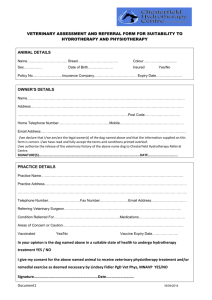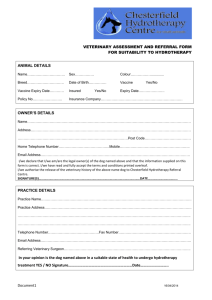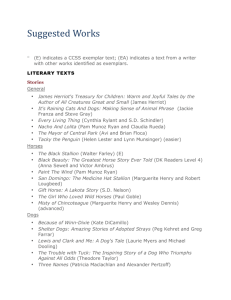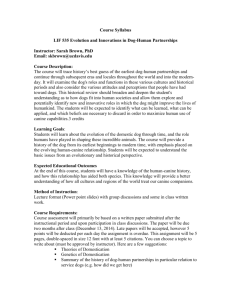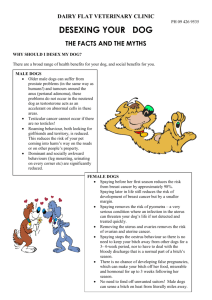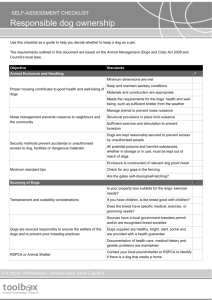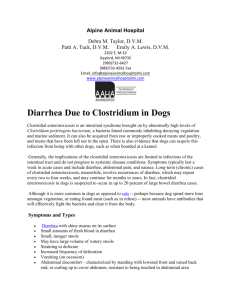Daily routine - Dog Advisory Council
advertisement
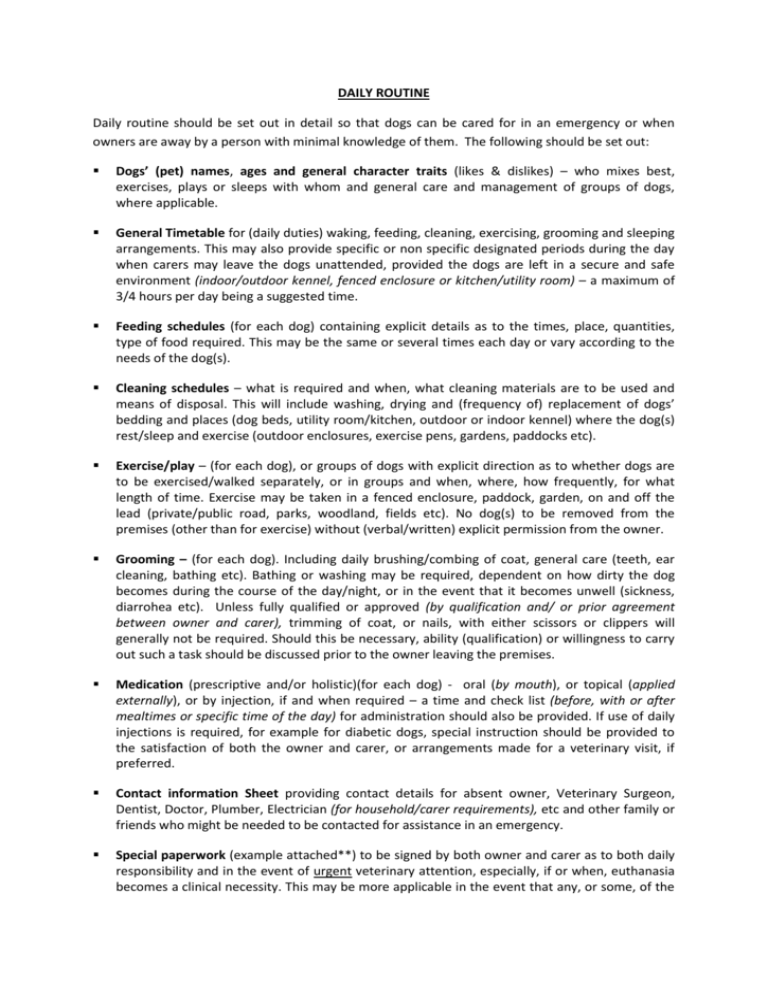
DAILY ROUTINE Daily routine should be set out in detail so that dogs can be cared for in an emergency or when owners are away by a person with minimal knowledge of them. The following should be set out: Dogs’ (pet) names, ages and general character traits (likes & dislikes) – who mixes best, exercises, plays or sleeps with whom and general care and management of groups of dogs, where applicable. General Timetable for (daily duties) waking, feeding, cleaning, exercising, grooming and sleeping arrangements. This may also provide specific or non specific designated periods during the day when carers may leave the dogs unattended, provided the dogs are left in a secure and safe environment (indoor/outdoor kennel, fenced enclosure or kitchen/utility room) – a maximum of 3/4 hours per day being a suggested time. Feeding schedules (for each dog) containing explicit details as to the times, place, quantities, type of food required. This may be the same or several times each day or vary according to the needs of the dog(s). Cleaning schedules – what is required and when, what cleaning materials are to be used and means of disposal. This will include washing, drying and (frequency of) replacement of dogs’ bedding and places (dog beds, utility room/kitchen, outdoor or indoor kennel) where the dog(s) rest/sleep and exercise (outdoor enclosures, exercise pens, gardens, paddocks etc). Exercise/play – (for each dog), or groups of dogs with explicit direction as to whether dogs are to be exercised/walked separately, or in groups and when, where, how frequently, for what length of time. Exercise may be taken in a fenced enclosure, paddock, garden, on and off the lead (private/public road, parks, woodland, fields etc). No dog(s) to be removed from the premises (other than for exercise) without (verbal/written) explicit permission from the owner. Grooming – (for each dog). Including daily brushing/combing of coat, general care (teeth, ear cleaning, bathing etc). Bathing or washing may be required, dependent on how dirty the dog becomes during the course of the day/night, or in the event that it becomes unwell (sickness, diarrohea etc). Unless fully qualified or approved (by qualification and/ or prior agreement between owner and carer), trimming of coat, or nails, with either scissors or clippers will generally not be required. Should this be necessary, ability (qualification) or willingness to carry out such a task should be discussed prior to the owner leaving the premises. Medication (prescriptive and/or holistic)(for each dog) - oral (by mouth), or topical (applied externally), or by injection, if and when required – a time and check list (before, with or after mealtimes or specific time of the day) for administration should also be provided. If use of daily injections is required, for example for diabetic dogs, special instruction should be provided to the satisfaction of both the owner and carer, or arrangements made for a veterinary visit, if preferred. Contact information Sheet providing contact details for absent owner, Veterinary Surgeon, Dentist, Doctor, Plumber, Electrician (for household/carer requirements), etc and other family or friends who might be needed to be contacted for assistance in an emergency. Special paperwork (example attached**) to be signed by both owner and carer as to both daily responsibility and in the event of urgent veterinary attention, especially, if or when, euthanasia becomes a clinical necessity. This may be more applicable in the event that any, or some, of the dogs are elderly or clinically infirm or in case of accident. The Veterinary Surgeon, looking after said dog(s), should be advised prior to the owner’s absence, especially for long periods of time (holiday/business) that a carer is in sole charge. In any event, all effort must first be made to contact the owner prior to a decision by the Vet that euthanasia is the only option.




